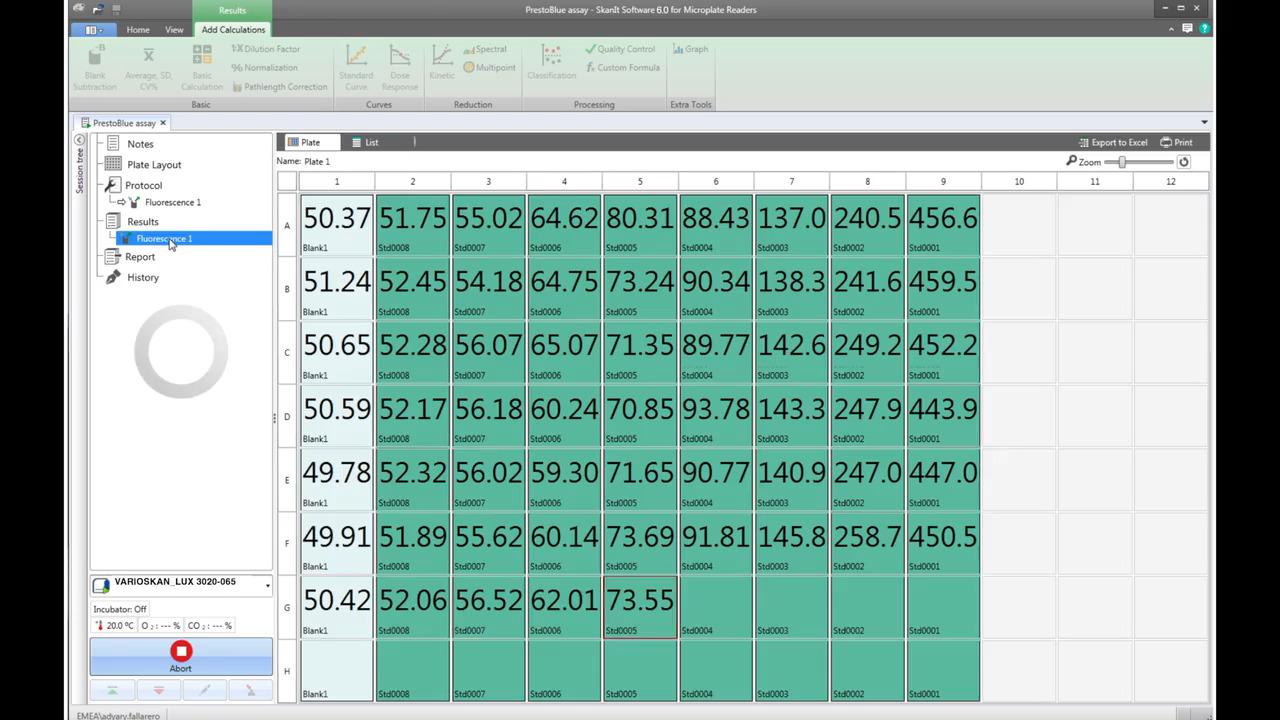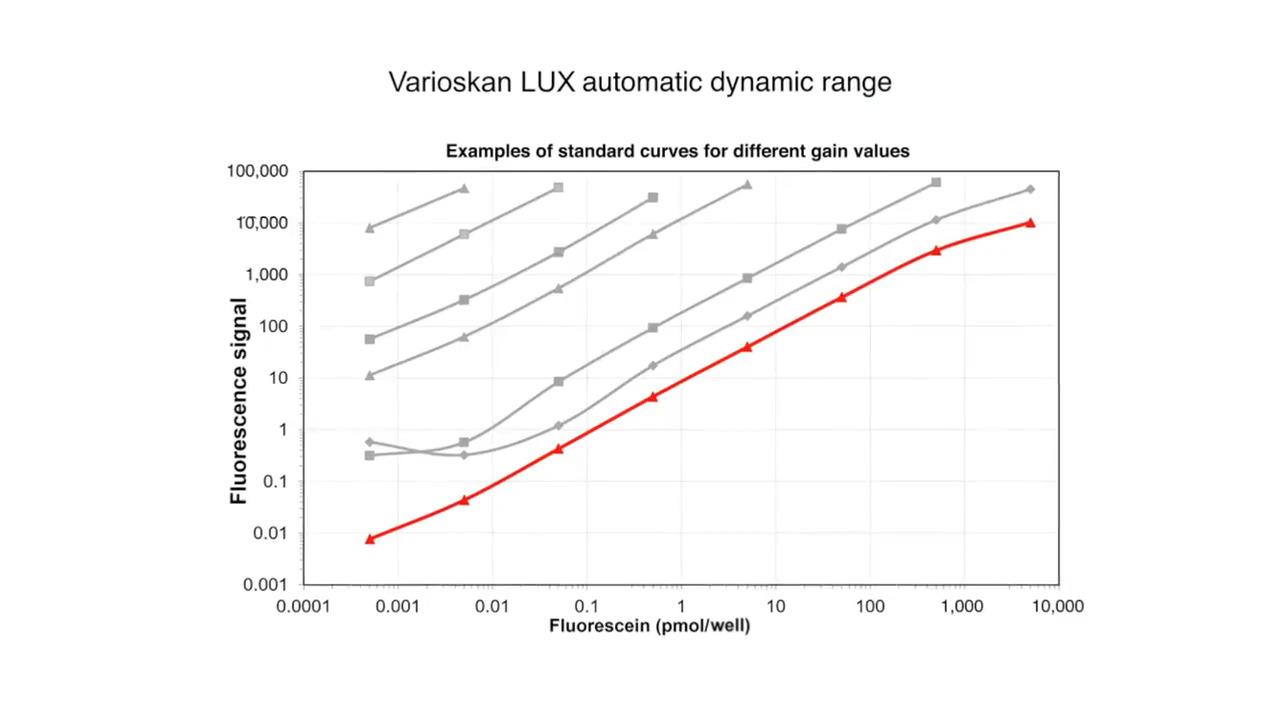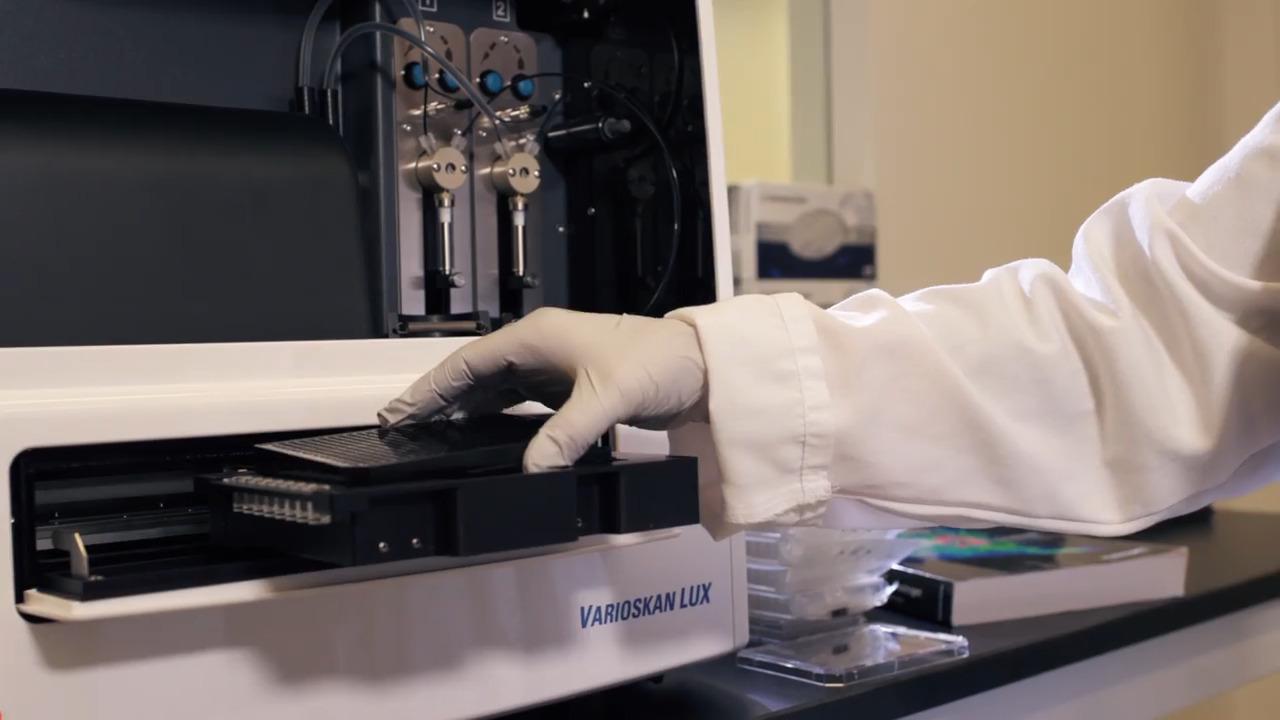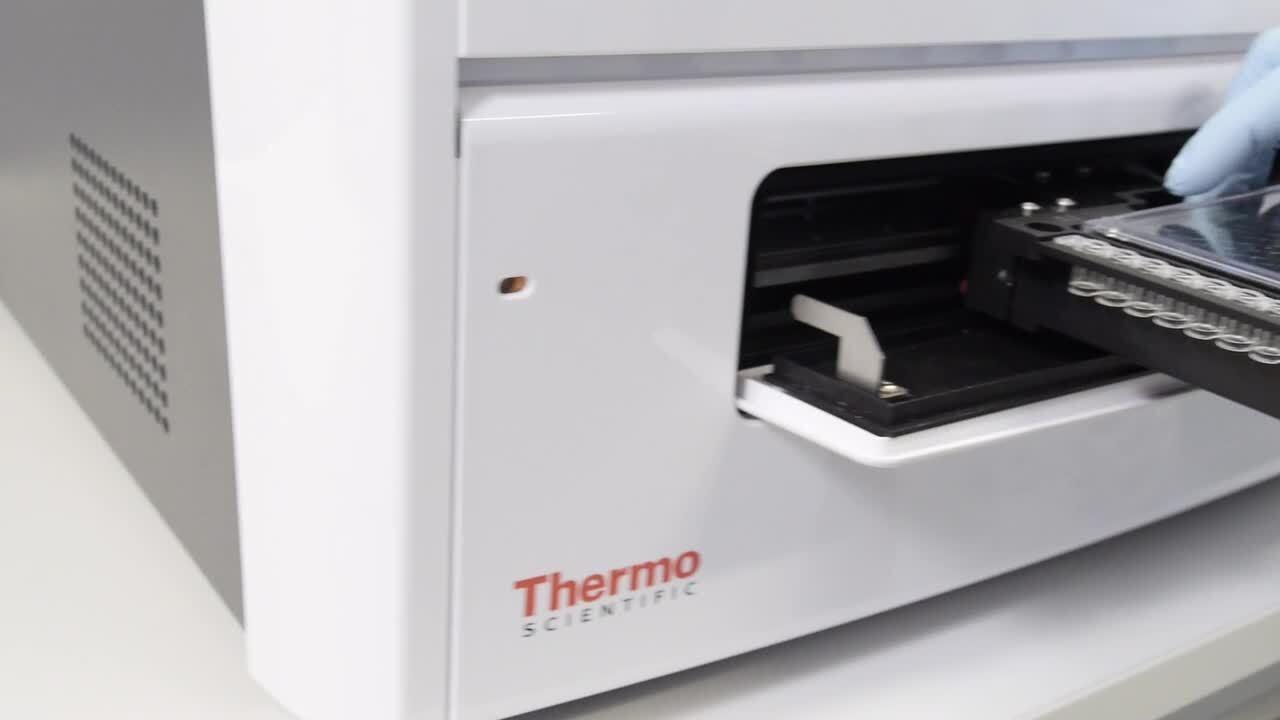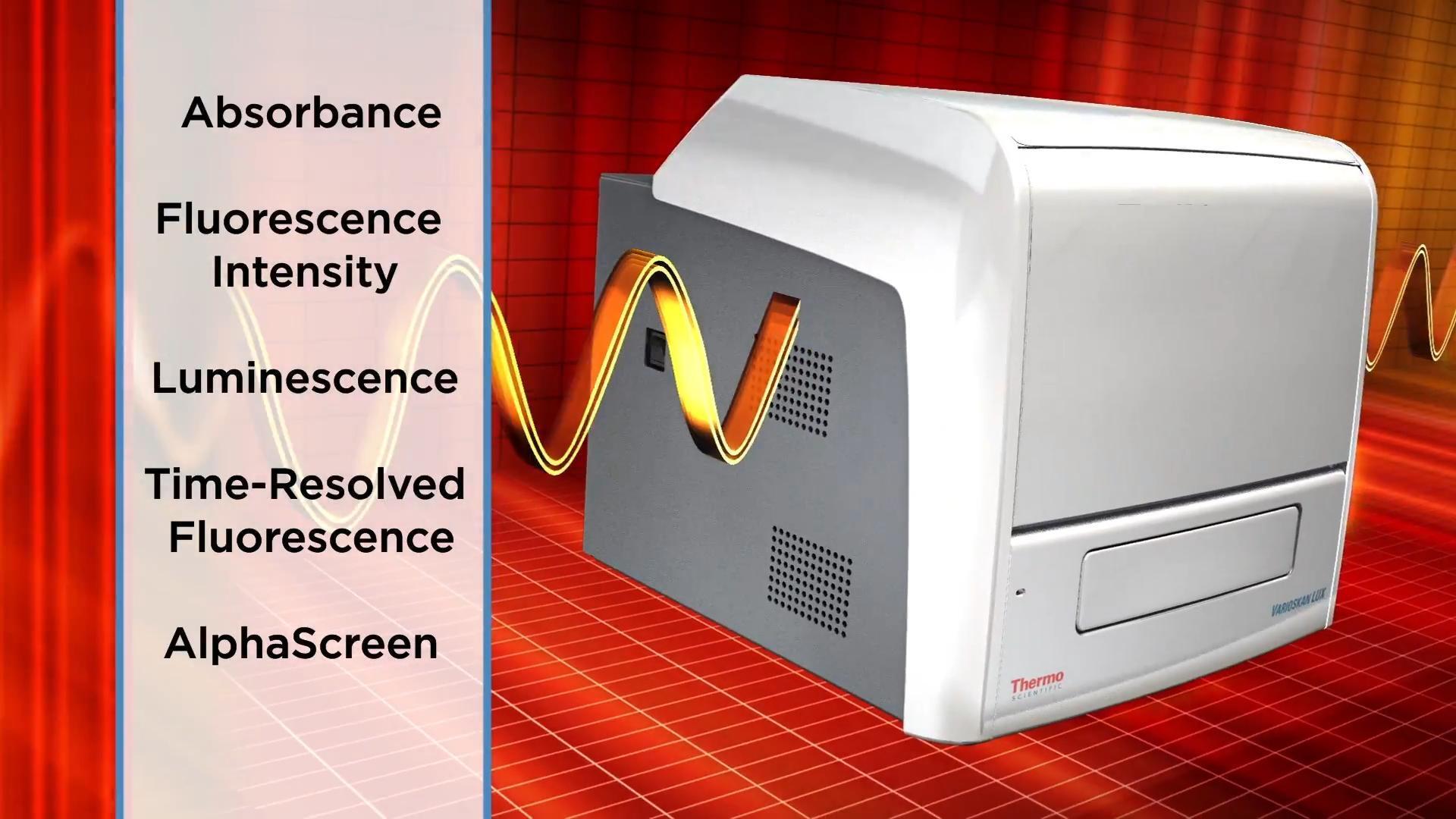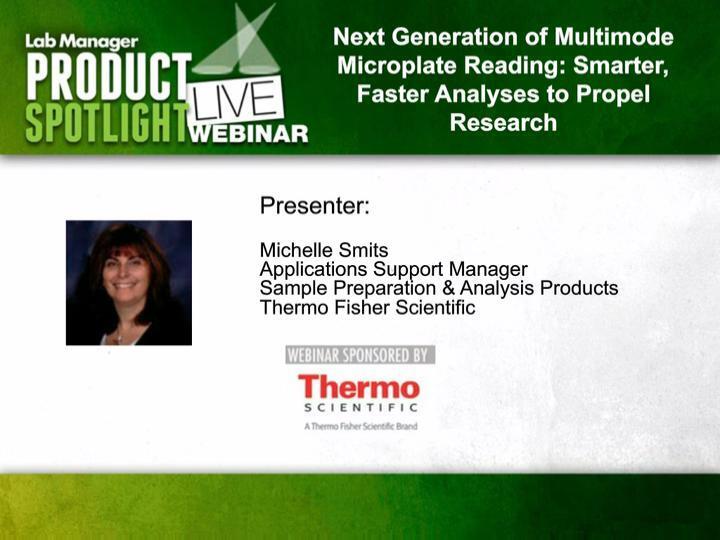Search Thermo Fisher Scientific
.png)
This multimode microplate reader combines simplicity with top-of-the-line performance. Designed for researchers with a wide variety of needs, the Thermo Scientific Varioskan LUX Multimode Microplate Reader offers features that help save time and reduce common errors in the lab—including automated dynamic range selection, which adjusts the optimal reading range based on signal intensities; and built-in safety controls, which alert you to potential errors before they happen.
Features
In addition to the common features of all Microplate Reader instruments, the Varioskan LUX offers:
Automatic dynamic range selection
Designed to automatically select the optimal reading range based on the signal intensity in each well. This feature saves time and reduces the risk of loss of sensitivity or over-saturation of signals.
Integrated gas control
The ability to control O2 and CO2 levels in your microplate reader replaces the need for constant handling of plates between the incubator and reader, and helps to ensure that cells remain alive throughout the experiment.
Smart safety controls
Automatic safety checks designed to alert you of potential problems before they happen. This decreases the potential of a range of experimental errors, from user mistakes to power outages.
Flexible wavelength selection
The instrument selects the measurement wavelength using filters or monochromators, depending on which is optimal for each measurement technology.
Available measurement technology configurations
All configurations available with top or top and bottom fluorescence intensity reading; none, one, or two dispensers; and optional integrated gas modules.
System configuration options |
Absorbance and Fluorescence intensity |
Absorbance, Fluorescence intensity, and Luminescence |
Absorbance, Fluorescence intensity, Luminescence, and AlphaScreen |
Absorbance, Fluorescence intensity, Luminescence, and Time-resolved fluorescence |
Absorbance, Fluorescence intensity, Luminescence, Time-resolved fluorescence, and AlphaScreen |
Videos and demos
Specifications
Category |
Attribute |
Description |
Absorbance |
Plate types |
6-384 well plates |
Wavelength selection |
Double monochromators |
|
Wavelength range |
200–1,000 nm |
|
Light source |
Xenon flash lamp |
|
Read out range |
0–6 Abs |
|
Linear measurement range |
0–4 Abs (96-well plate) at 450 nm, ± 2% 0–3 Abs (384-well plate) at 450 nm, ± 2% |
|
Accuracy |
0.003 Abs or ± 2%, at 200–399 nm (0–2 Abs) 0.003 Abs or ± 1%, at 400–1,000 nm (0–3 Abs) |
|
Precision |
SD <0.001 Abs or CV <0.5%, at 450 nm (0–3 Abs) |
|
Fluorescence Intensity |
Plate types |
6 – 1536-well plates (top reading) 6 – 384-well plates (bottom reading) |
Wavelength selection |
Double excitation and emission monochromators |
|
Excitation wavelength range |
200–1,000 nm |
|
Emission wavelength range |
270–840 nm |
|
Light source |
Xenon flash lamp |
|
Sensitivity |
Top reading: <0.4 fmol fluorescein/well (black 384-well plate) Bottom reading: <4 fmol fluorescein/well, (clear bottom black 384 square well plate) |
|
Dynamic range |
Top reading >6 decades Bottom reading >5.5 decades |
|
Time-resolved fluorescence |
Plate types |
6–1,536 well plates |
Wavelength selection |
Filters (spectral scanning with double excitation and emission monochromators) |
|
Excitation wavelength range |
Fixed to 334 nm (spectral scanning 200–840 nm) |
|
Emission wavelength range |
400–700 nm (spectral scanning 270–840 nm) |
|
Light source |
Xenon flash lamp |
|
Sensitivity |
<1 amol Eu/well (white low volume 384 well plate) |
|
Dynamic range |
>6 decades |
|
Luminescence |
Plate types |
6–1536 well plates (spectral scanning 6-384 well plates) |
Wavelength selection |
Direct or filters (spectral scanning with double monochromators) |
|
Wavelength range |
360–670 nm |
|
Sensitivity |
<7 amol ATP/well (white 384-well plate) |
|
Dynamic range |
>7 decades |
|
Alpha |
Plate types |
6-1536 well plates |
Wavelength selection |
Filters |
|
Excitation wavelength range |
Fixed to 680 nm |
|
Emission wavelength range |
400–660 nm |
|
Light source |
LED |
|
Sensitivity |
<100 amol phosphotyrosine/well (white 384-well plate) |
|
Dispensing |
Plate types |
6-384 well plates |
No. of dispensers |
None, one or two |
|
Syringe size |
1 mL (standard), 5 mL (optional) |
|
Dispensing volume |
2–5,000 μl, in 1 µl increments (1 mL syringe) 5–25,000 μl, in 5 µl increments (5 mL syringe) |
|
Accuracy |
<1 μl with 50 μl (0.4 mm tip) <0.2 μl with 5 μl (0.25 mm tip) |
|
Precision |
<1 μl with 50 μl (0.4 mm tip) <0.25 μl with 5 μl (0.25 mm tip) |
|
Dead volume |
Reagent loss <100 μl, Total tubing volume <800 μl |
|
Incubator and Shaker |
Temperature range |
From ambient + 4 °C to 45 °C |
Shaking type |
Orbital |
|
Integrated Gas Module |
Measurement chamber O2 concentration accuracy |
±1.0% (37 °C, 1% O2) |
Measurement chamber CO2 concentration accuracy |
±1.0%. (37 °C, 5% CO2) |
|
Measurement chamber O2 concentration |
1-21% |
|
Measurement chamber CO2 concentration |
0.1-15% |
|
Gas concentration recovery time |
10 minutes |
|
General Features |
Measurement modes |
End-point, kinetic, spectra, multipoint and kinetic spectra |
Measurement speed |
Reads a 96-well plate in 15 s, a 384-well plate in 45 s, and a 1,536-well plate in 135 s (minimum times) |
|
Interface |
PC software (SkanIt software) |
|
Dimensions (D x W x H) |
58 x 53 x 51 cm (23 x 21 x 20 in) |
|
Weight |
53 - 60 kg, (117-132 lb), depending on configuration |
For Research Use Only. Not for use in diagnostic procedures.
